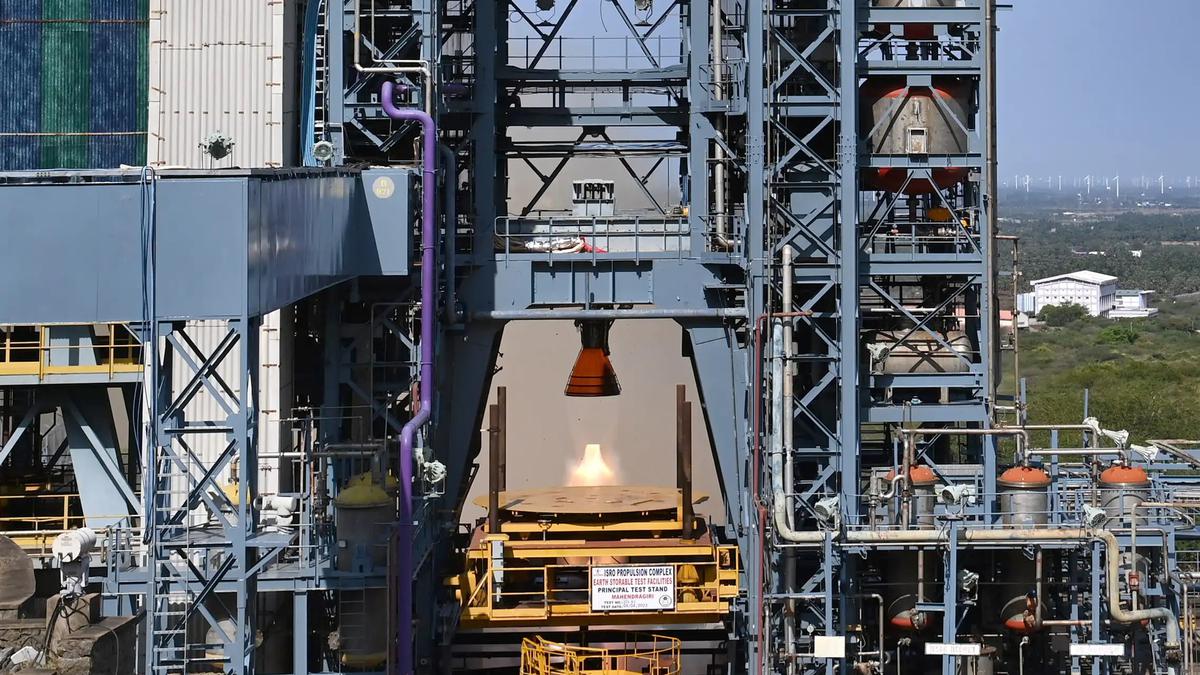
ISRO completes two crucial tests for Gaganyaan mission
The Hindu
ISRO could complete the human-rated L110-G Vikas engine qualification within a relatively short span of three years According to the space agency, the successful completion of this test marks a major milestone in the human space flight programme, Gaganyaan, of ISRO.
Indian Space Research Organisation (ISRO) has completed two key tests for Gaganyaan — the Human Space Flight Programme.
The space agency said that the final long-duration hot test of human-rated L110-G Vikas engine was successfully accomplished for the planned qualification duration of 240 seconds on April 6 at ISRO Propulsion Complex (IPRC), Mahendragiri.
According to the space agency, the successful completion of this test marks a major milestone in the human space flight programme, Gaganyaan, of ISRO. The air-lit liquid core stage of human-rated launch vehicle (LVM3-G) uses two L110-G Vikas engines in clustered configuration. With this test, all the planned qualification tests of the engine have been completed successfully.
The Vikas engine uses storable propellants in a pump-fed gas generator cycle. Human rated Vikas engine has higher structural margins for sub-systems, improved assembly process and additional measurements for health monitoring. Human rated Vikas engine development hot tests were conducted in a step-by-step manner at Principal Test Stand, IPRC. Nine engines had undergone 14 hot tests with a cumulative duration of 1215 seconds, including four long-duration tests of 240 seconds each.
ISRO added that it could complete the human-rated L110-G Vikas engine qualification within a relatively short span of three years.
Gaganyaan has got a bipropellant-based propulsion system for providing 3-axis control (Pitch, Yaw & Roll) to crew module following service module separation during re-entry, i.e. from an altitude of 170 km to 7 km till deployment of the parachute-based deceleration system.
It also provides altitude control in the ascent phase abort, if any, from 3 km to 70 km.











